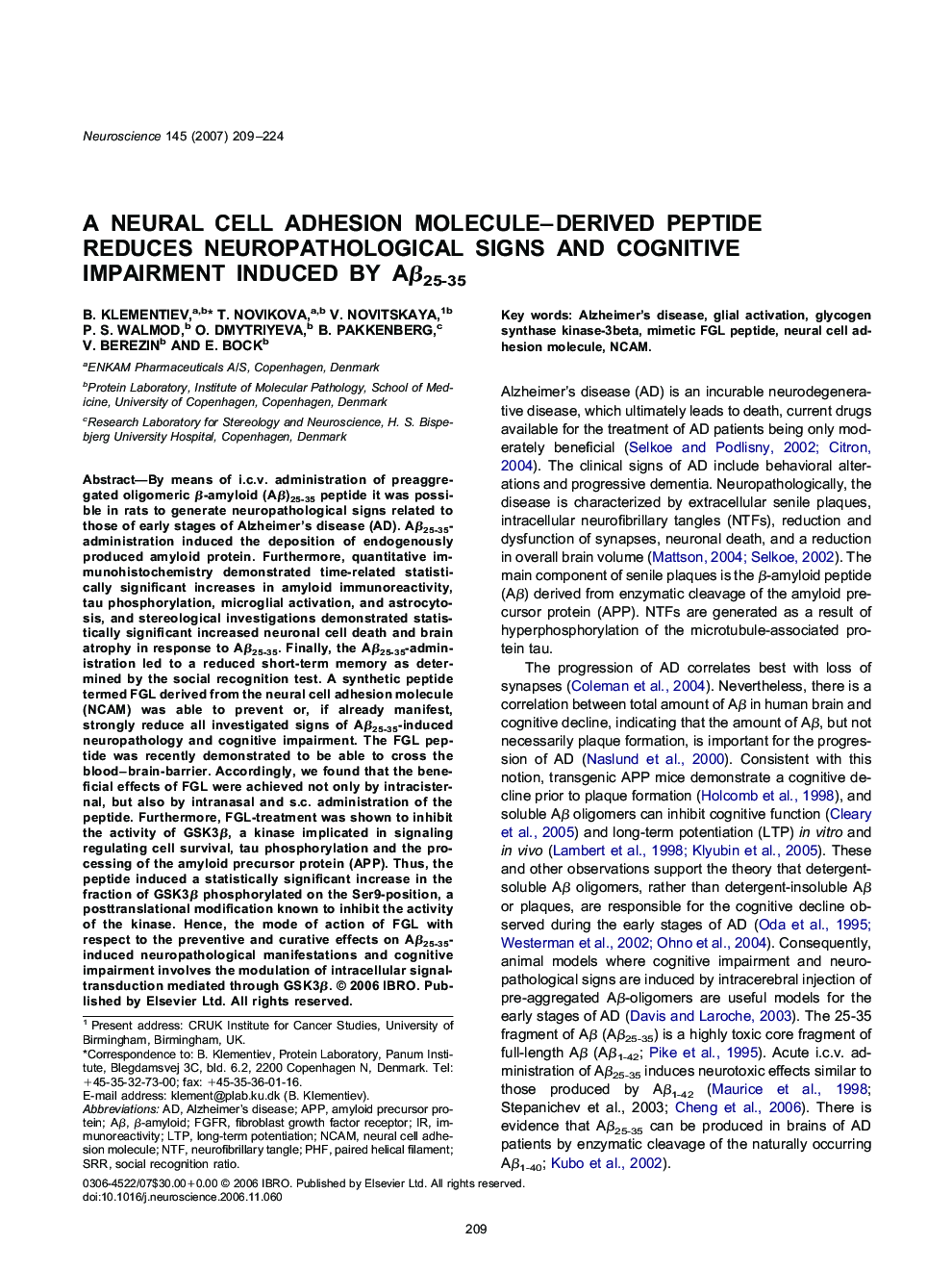| Article ID | Journal | Published Year | Pages | File Type |
|---|---|---|---|---|
| 6278538 | Neuroscience | 2007 | 16 Pages |
Abstract
By means of i.c.v. administration of preaggregated oligomeric β-amyloid (Aβ)25-35 peptide it was possible in rats to generate neuropathological signs related to those of early stages of Alzheimer's disease (AD). Aβ25-35-administration induced the deposition of endogenously produced amyloid protein. Furthermore, quantitative immunohistochemistry demonstrated time-related statistically significant increases in amyloid immunoreactivity, tau phosphorylation, microglial activation, and astrocytosis, and stereological investigations demonstrated statistically significant increased neuronal cell death and brain atrophy in response to Aβ25-35. Finally, the Aβ25-35-administration led to a reduced short-term memory as determined by the social recognition test. A synthetic peptide termed FGL derived from the neural cell adhesion molecule (NCAM) was able to prevent or, if already manifest, strongly reduce all investigated signs of Aβ25-35-induced neuropathology and cognitive impairment. The FGL peptide was recently demonstrated to be able to cross the blood-brain-barrier. Accordingly, we found that the beneficial effects of FGL were achieved not only by intracisternal, but also by intranasal and s.c. administration of the peptide. Furthermore, FGL-treatment was shown to inhibit the activity of GSK3β, a kinase implicated in signaling regulating cell survival, tau phosphorylation and the processing of the amyloid precursor protein (APP). Thus, the peptide induced a statistically significant increase in the fraction of GSK3β phosphorylated on the Ser9-position, a posttranslational modification known to inhibit the activity of the kinase. Hence, the mode of action of FGL with respect to the preventive and curative effects on Aβ25-35-induced neuropathological manifestations and cognitive impairment involves the modulation of intracellular signal-transduction mediated through GSK3β.
Related Topics
Life Sciences
Neuroscience
Neuroscience (General)
Authors
B. Klementiev, T. Novikova, V. Novitskaya, P.S. Walmod, O. Dmytriyeva, B. Pakkenberg, V. Berezin, E. Bock,
